The Slide and Slide Lite camera straps has been around for a few years, but these updated versions were launched as part of a highly successful Kickstarter campaign at the end of 2017, along with the launch of the Capture Clip V3.
Peak Design Strap Lineup Overview
Peak Design’s camera strap lineup consists of three different straps – in ascending order of size: Leash, Slide Lite, and Slide. Whilst the Leash is the smallest strap, this doesn’t mean it’s only for small cameras. In fact I often use a Leash with big pro DSLRs simply because I value the incredibly compact nature of the strap (read more in my Leash camera strap review). On the other end of the spectrum you have the big Slide strap. This strap really is only meant for big DSLRs, there would be no need or benefit to using such a big strap with a mirrorless camera or anything smaller. That’s where the Slide Lite comes in! As the name suggests, the Slide Lite is simply a shrunken down version of the Slide. It has exactly the same features, but it’s not quite as wide so weight from a heavy setup wouldn’t be distributed quite so well.
In summary:
- Leash: Any size of camera – although comfort will vary.
- Slide Lite: Any size of camera – but primarily mirrorless and small-bodied DSLR (Rebel series etc.)
- Slide: DSLR and pro DSLR + medium format mirrorless (Fuji GFX etc.)
Design and Comfort in Use
The larger Slide strap is designed to be comfortable with a considerably larger weight of camera than its smaller sibling. Not only is it much wider, but it also has a padded section over the shoulder which is lacking on the Slide Lite. Out of curiosity, I tested a Canon 5D Mark IV setup on the Slide Lite, which is really a bigger camera than it was designed for. The result from a comfort standpoint was pretty comparable to using the supplied Canon-branded strap that came with the camera. Not surprising given the relatively similar widths, and lack of padding on both of them. What this little test tells me is that for regular and larger DSLRs, the Slide strap is where you want to be if you’re trying to make a comfort upgrade from the standard strap that came with your camera.
Granted, there might be other considerations for you in wanting to upgrade, such as getting a stealthier looking strap, or one with on-the-fly length adjustability. From a comfort point of view though, you’ll want the Slide strap for anything bigger than a Rebel or a D3400 with kit lens combination. Basically the Slide Lite is going to be your go-to solution for a mirrorless setup, or the smallest DSLR in a brand’s lineup so long as you don’t put more than an 18-55 kit zoom on it.
As I mentioned earlier, to give you comfort for prolonged carrying, the bigger Slide strap has both a generous width and also a thin padded section on the shoulder. It works well, and I found this to be as comfortable as you could hope a camera strap to be. That small amount of padding in the shoulder area is thin enough that it doesn’t feel like it adds unnecessary bulk to the strap, and doesn’t prevent you from folding or rolling it up to stuff it in a bag or pocket. You’ll never get it as small at the Slide Lite of course, but it’s not as unfriendly to stuff into a pocket as something like a full rubber-backed neoprene OpTech strap.
Length adjustment on both versions is handled by a pair of plastic latches that flip open to allow quick changes to the strap length. By having one of these on each side of the strap, it means there’s always one within easy reach on the front of your body if you’re wearing the camera diagonally over a shoulder. I tend to keep the strap quite short and tight when I’m on the move, but when you want to shoot, all you need to do is pop the latch and pull on the strap to give you extra room to work with. When you shorten the strap, the latch itself becomes the handle for your fingers to pull on. An elegant solution!
The central portion of both straps features rubber strips on one side for added grip. When you’re wearing the strap over just a single shoulder you’ll want to make use of that rubber grip to stop the camera slipping off. When the camera is slung across your body, or around your neck though, simply flip the strap over to leave the rubber facing outwards. This allows you to freely move the camera, and have the strap slide easily over your clothing.

Attaching these straps to your camera is done with the ingenious Anchor system that PD have been using for so long. The round Anchor is depressed and released with a thumb, and whole strap can be removed in a couple of seconds. It’s no secret that I love this system and I have Anchors attached to all my cameras, long lenses and small camera bags. Typically this means I’ll take a single strap with me wherever I’m going, but it gives me a ton of options as to what I’ll end up slinging over my shoulder. As I see it, there’s little point in having a shoulder strap on a camera that is in a shoulder bag for example.
I’ve been known to cut shoulder straps off bags and replace them with Peak Design camera straps instead, so that I can swap them back and forth between camera and bag. I actually just did this again a couple of days ago while testing a new shoulder bag for an upcoming review. I thought that the bag had a terrible shoulder strap, so I cut it off, put Anchors on it and used this Slide strap instead. If you follow this site, you’ll see that review shortly… I don’t think then camera bag company in question will be all that happy about it but they shouldn’t have put an awful strap on a great bag!
Anyway… getting back to the review… Some people will comment that this tiny little Anchor loop doesn’t look all that strong, but actually it’s made from Dyneema, and has a breaking strain of over 200lbs. Dyneema is stronger for its weight than Kevlar, and there’s a reason that they use the stuff to make climbing harnesses! I’ve no qualms whatsoever about hanging my gear off these things. I even have a set of them on my Canon 200-400mm lens and I sling that thing over my shoulder with these, even though it’s nearly worth more than my car. You can trust these Anchors, as long as you don’t fray them on sharp edges, but then that goes for any kind of strap.
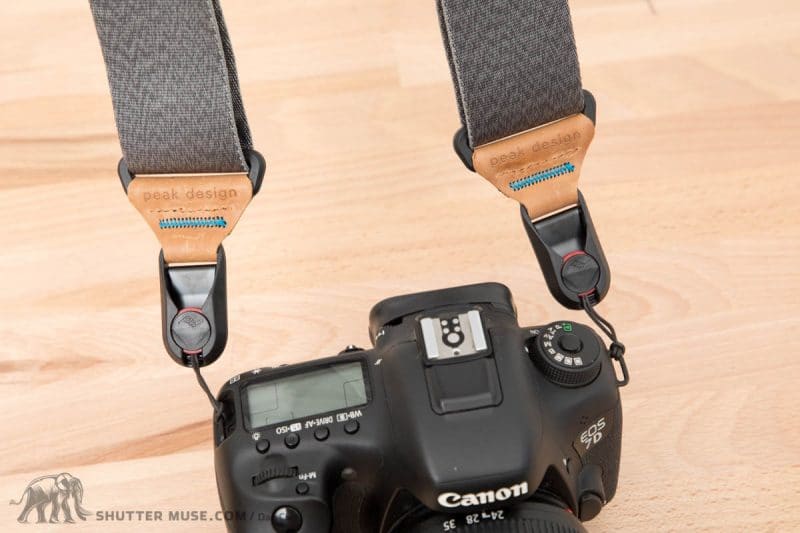
What’s New With These 2017 Versions?
The Slide Straps use Peak Design’s excellent Anchor quick release system, allowing you to quickly detach the strap when you don’t need it, such as when the camera is on a tripod. This updated version of the Slide comes with some slightly altered Anchors which began to ship this year as well. The round part of the Anchor is very slightly tapered which makes single handed release much easier. The chord loop on the Anchor also uses a thinner gauge of chord, although the breaking strain on them remains at an impressible 200lbs, so you won’t be dropping your camera any time soon. With this thinner chord, its easier to loop the Anchors through tiny eyelets on smaller cameras. Don’t worry if you have existing PD gear though, these new Anchors are backwards compatible with all older straps, and likewise, older Anchors will still fit into the Anchor clips on the end of the new Slide straps.
It’s a small update, but it’s a worthwhile one, and there’s no down side to it as far as I could find. The claimed ease of one-handed release is definitely true, but not to the point where you could ever do it accidentally.
The second major talking point about this 2017 version is that they come with a new item called the Anchor Mount. This tiny mount screws into the 1/4 20 tripod socket on the bottom of your camera, allowing you to clip the strap there with an Anchor. Traditional shoulder strap mounting points on the left and right side of a camera body cause the lens to point outwards away from your body. When you switch one of those mount points to the base of the camera, it hangs with the lens pointing downwards. This protects the lens in tight spaces, and also causes the whole setup to bounce around less when you’re walking.
All Peak Design’s previous camera straps came with an Arca-compatible baseplate which could be used to mount the camera in a Capture Clip, onto an Acrca-type ball head or onto a shoulder strap with an Anchor. For these updated Slide straps, this square tripod plate is no longer included and instead you get the Anchor Mount. I think this change will fall squarely in the “you can’t please everybody” category. If you don’t use a Capture Clip or a tripod, then the Anchor Mount gives you the preferred carrying style, but without the bulk of a baseplate. On the other hand, if you do use a tripod, or a Capture Clip, the Anchor mount serves no purpose whatsoever. You’ll just have to stick it in a drawer and forget about it.
The good news is that if you buy a Capture Clip, it obviously comes with the square plate anyway, so I’m sure that some of Peak Design’s logic revolves around that. Rather than essentially providing Capture Clip owners with a second baseplate, they are giving those that don’t use the Capture Clip, a lower profile way to get the bast carry setup with their strap. Personally I always liked getting the extra baseplate because I have multiple cameras and other accessories that could use them. C’est la vie, I guess. You can always buy the plates separately if you do need spares for additional cameras.
The other subtle change that has been made is to the rubber grip that’s on one side of the central portion of the strap. On the previous version, the rubber rang lengthways along the strap and after a lot of use over your shoulder, the rubber would develop bumps or creases in it from being folded. With the new version, the rubber runs in the opposite direction to prevent this.
Should you Upgrade?
If you own the previous version of either of these straps there’s really no reason to upgrade unless you particularly like the new grey colour. Simple as that. If you’re jealous of the new Anchor Mount, this can be purchased separately for just $10. I’m not sure why, but Peak Design seem to hide this on their store – here’s the link though. you can also buy the newly updated Anchors in a 4-pack for $10 as well. Again, it seems to be hidden on their store – here’s the link.
Conclusion
This is a minor iterative update to a pair of already excellent products, so it’s no surprise at all that I like them a lot. A couple of minor niggles with the first version have been addressed, but none of the good things have been tinkered with. Exactly how an update should be! I’m glad they are offering the strap in this new grey colour as well, I think it looks fantastic. I can’t really find fault with the strap itself, but personally I’m a little disappointed that the straps only comes with the new low profile anchor mount, and not a capture plate as the previous version did. It’s not a deal breaker, but I’ve always found uses for the Arca-style plates before, whereas these anchor mounts aren’t of any use to someone that uses a tripod.
In terms of choosing between the Slide and the Slide Lite, I think it’s actually pretty simple. If you have a regular sized DSLR or larger, get the Slide. If you have a mirrorless camera, or one of the compact DSLRs like the Rebel series cameras, you’ll be fine with the Slide Lite.
Where to Buy + Special Offer
As always, it’s greatly appreciated when you shop using the links on this page. I might make a small commission when you do this, and that helps me bring you more content in the future.
Slide
- Buy a Peak Design Slide from Peak Design
- Buy a Peak Design Slide from B&H Photo
- Buy a Peak Design Slide from Amazon

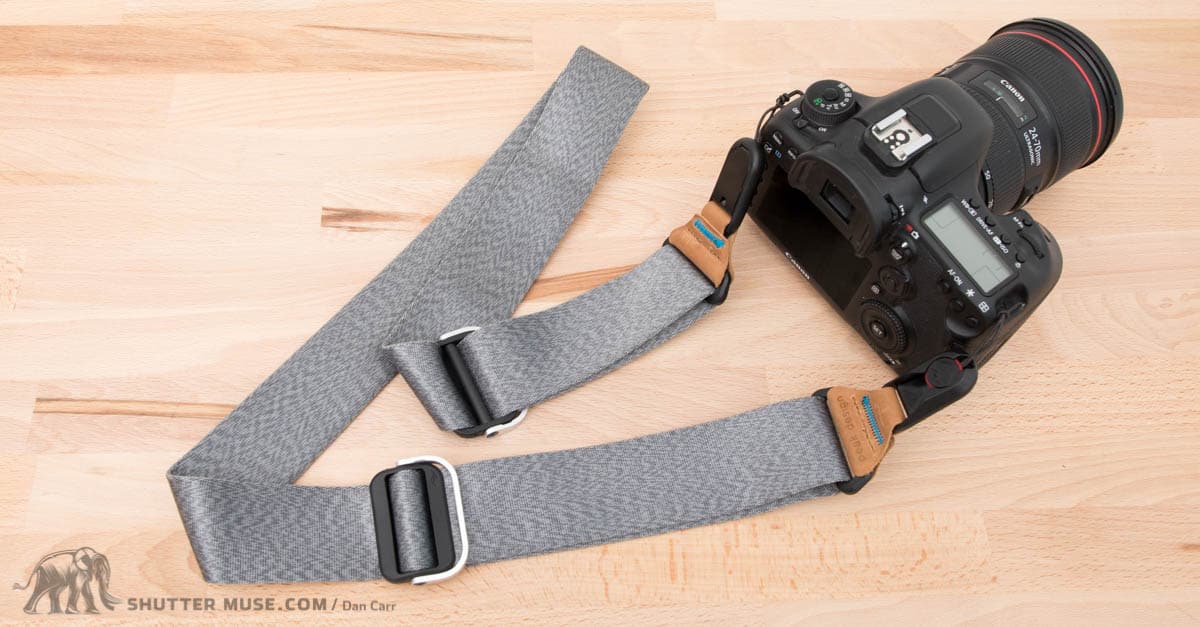





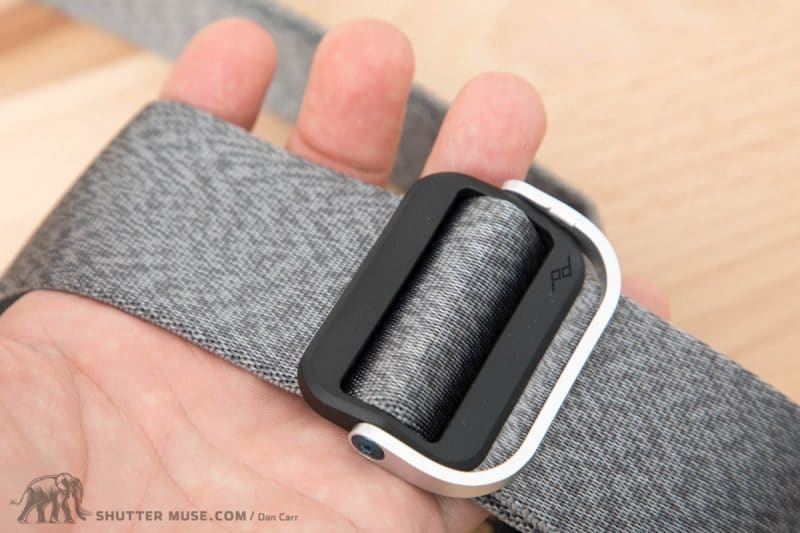
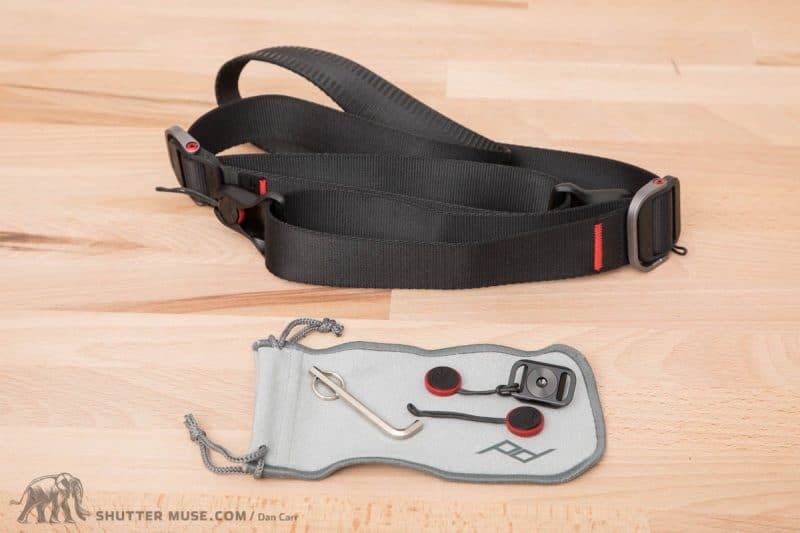
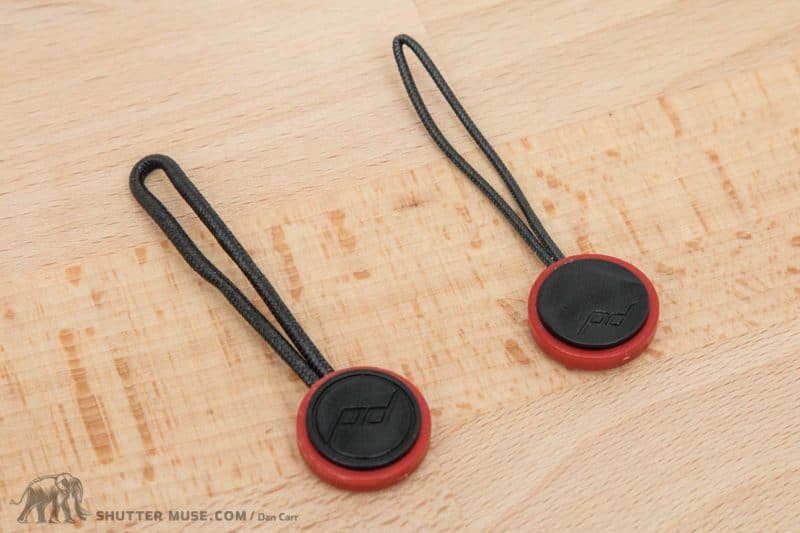

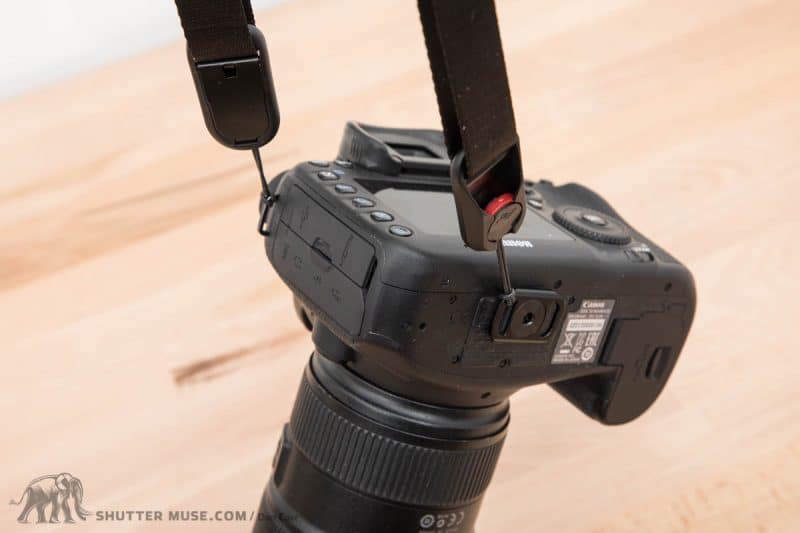

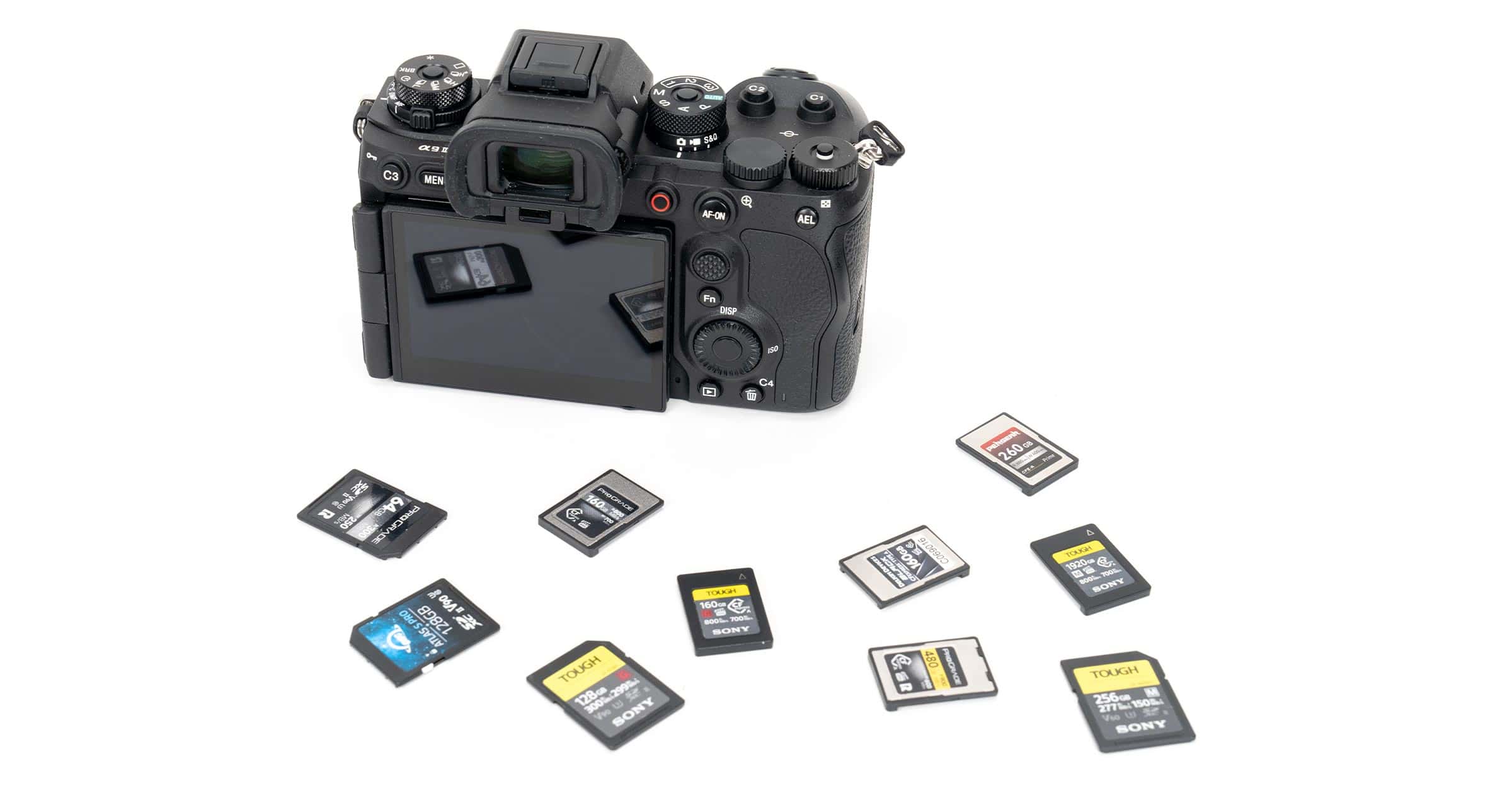
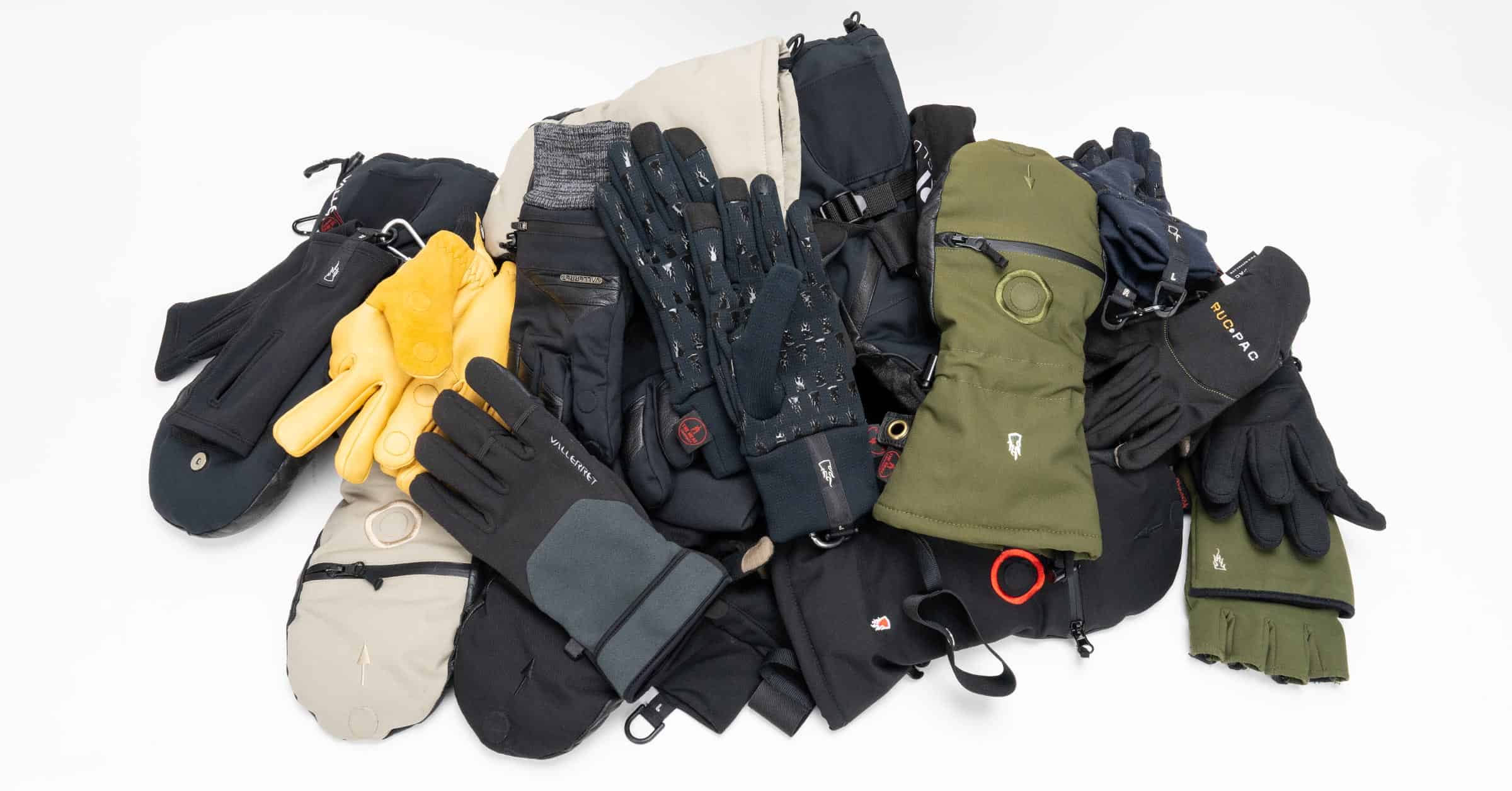


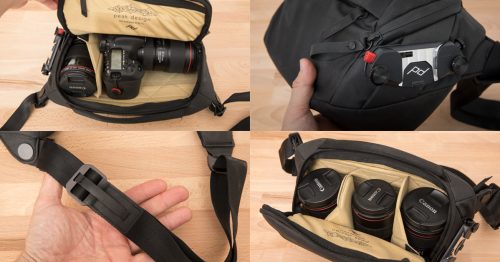
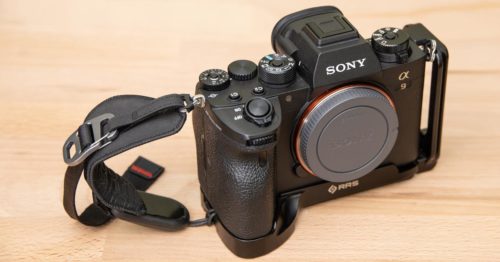
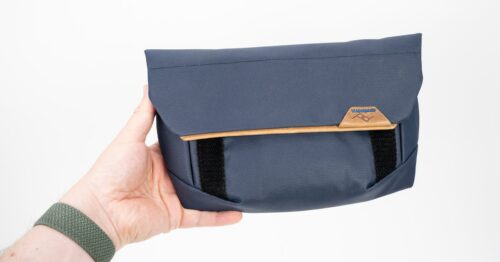
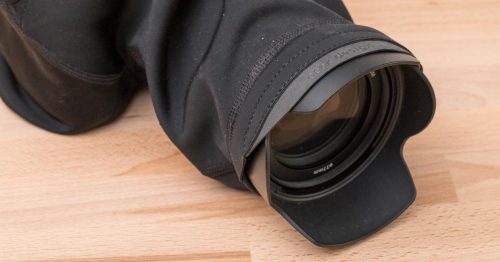
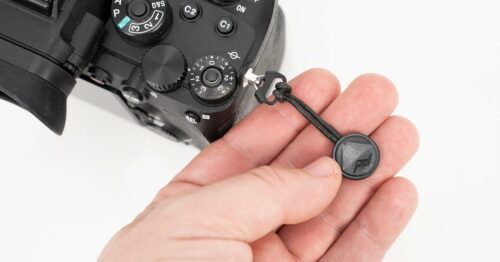
Hi,
I have a Nikon D3300 with a 300mm lens.
I currently use a Black Rapid strap (can’t remember the exact model) which uses a screw to attach to the camera’s tripod socket. I’m quite comfortable with having the camera (and lens) pointing downwards.
I have a Velbon CX-888 tripod (i’m not a professional photographer and I don’t use the tripod very often) which has a non-standard QR plate, such as the following:
https://www.google.co.il/search?q=universal+tripod+quick+release+PLATE&rlz=1C1GGRV_enIL787IL787&source=lnms&tbm=isch&sa=X&ved=0ahUKEwiFsKKKgI3eAhULKMAKHQ2jBWMQ_AUIDigB&biw=1680&bih=908&safe=active&ssui=on#imgrc=UYj0HLmIAFkdRM:
So this means that I can’t use a standard Manfrotto or Arca Swiss QR plate that will be attached to the camera and to the BR strap.
Purchasing a new strap won’t resolve this, as the Velbon’s plate is non-standard. Unless I forego the attachment via the tripod socket and attach the strap using the side lugs.
After reading your very interesting review, I found the following link:
https://support.peakdesign.com/hc/en-us/articles/203713355?input_string=can+the+anchor+mount+be+connected+to+a+qr+plate%3F
According th this, I could affix the Velcon’s QR plate to the camera and connect the anchor connector to it as well. But I’m not clear to where exactly?
Or is there any other solution?
Thanks.
What they are suggesting is that you loop their Anchor loop around the threaded stud on your plat before screwing it onto the camera. That way it can’t come off. That’s the best solution I know of.
Great review. My only issue is your recommendation with mirrorless. While body-only with a smaller system lens would benefit from the Lite, a Sony A7x body, gripped, with a G Master lens (not to mention a Sigma Art prime lol) is definitely worthy of the wider strap. Cheers.
Fair point, Chris. I must admit that I haven’t used a mirrorless setup that is as heavy as that. Thanks for adding your opinion! It’s very helpful to readers and myself! Cheers!